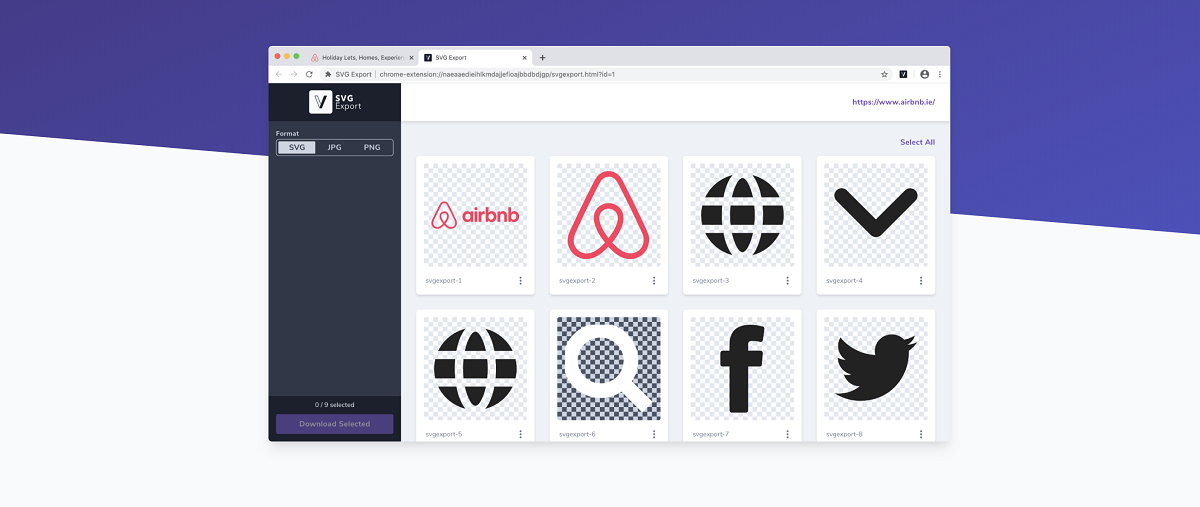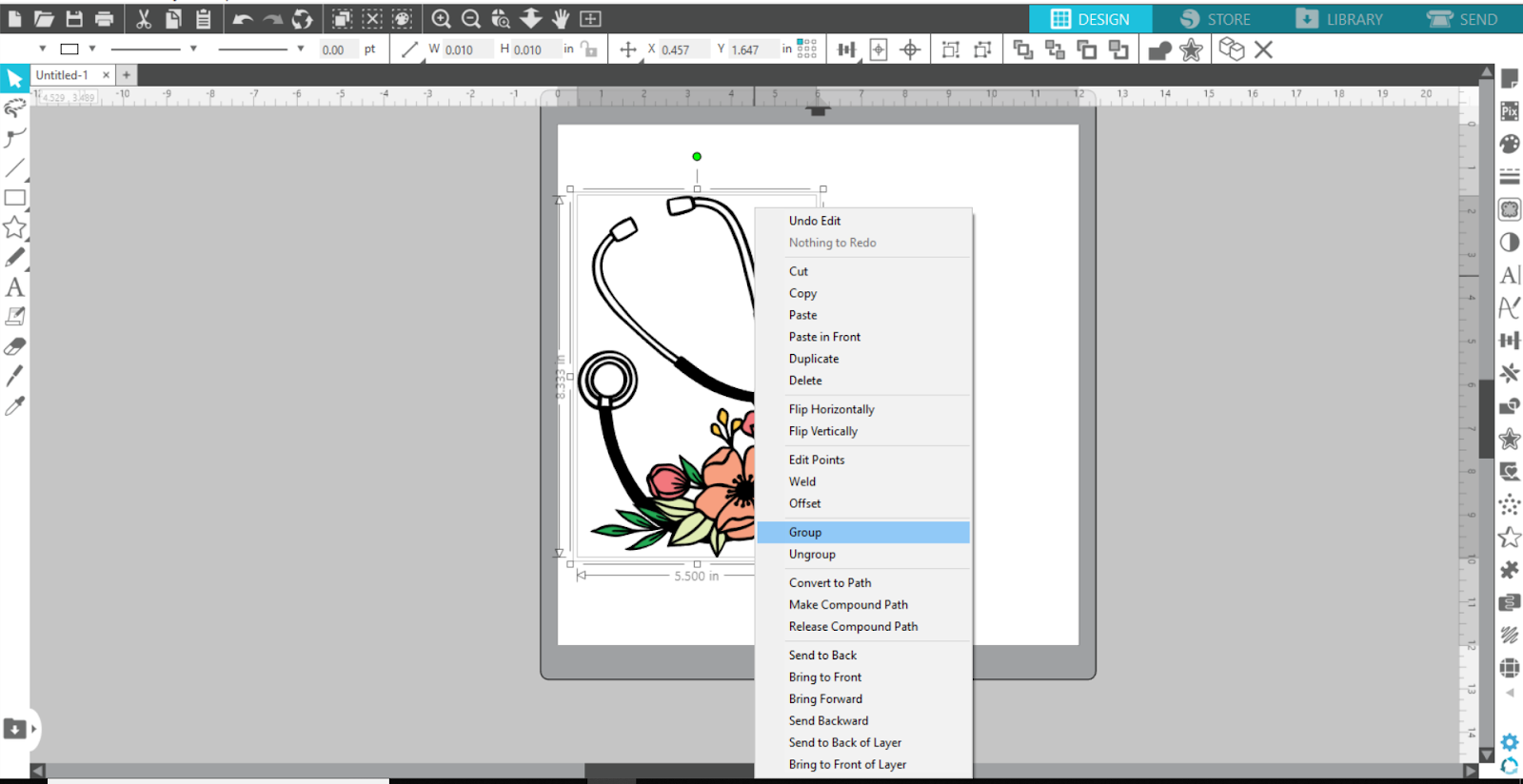Introduction
Welcome to the world of website downloading! If you’ve ever come across a stunning SVG (Scalable Vector Graphics) file on a website and wondered how to save it to your local drive, you’re in the right place. In this article, we’ll guide you through the steps to download an SVG file from a website seamlessly.
SVG files have gained popularity due to their flexibility and scalability, making them ideal for various purposes such as logos, icons, and illustrations. These vector-based graphics can be easily resized without losing any quality, making them a valuable resource for designers, developers, and digital enthusiasts alike.
When you stumble upon a website that showcases remarkable SVG artwork, you might want to download it for future use, or perhaps to study the design techniques behind it. Although downloading an SVG file may seem straightforward, some websites use non-standard methods for delivering files, making the process a bit trickier.
No worries, though! In the following sections, we’ll walk you through the step-by-step process of saving an SVG file from a website. You’ll learn how to locate the SVG file, right-click on it, select the appropriate option, choose the destination folder, and save the file to your computer. By following these instructions, you’ll be able to build your own collection of SVG files to use creatively in your projects.
So, whether you’re an aspiring designer looking for inspiration, a developer in need of an SVG asset, or simply someone who appreciates eye-catching artwork, let’s dive in and learn how to download SVG files from websites like a pro!
Why would you want to download an SVG from a website?
SVG files have become incredibly popular in the digital world, and for good reason. Here are a few reasons why you might want to download an SVG file from a website:
- Design Inspiration: SVG files can serve as a great source of inspiration for designers. By exploring different websites and downloading captivating SVG artwork, you can analyze the design techniques, color schemes, and creative ideas used by other talented artists.
- Building Your Asset Library: Downloading SVG files allows you to build a valuable collection of resources that you can use in your future projects. Whether it’s a set of icons, decorative elements, or intricate illustrations, having a library of SVG files can save you time and effort in creating custom designs.
- Learning and Education: If you’re a visual learner or a design enthusiast, downloading SVG files from websites can be a great way to study and understand different design styles. By examining the details and intricacies of professionally crafted SVG files, you can enhance your own design skills.
- Customization: SVG files are highly versatile and editable. Downloading them gives you the freedom to modify and customize the artwork to suit your needs. Whether you want to tweak the colors, resize the elements, or make any other modifications, having the SVG file gives you the flexibility to do so.
- Seamless Integration: SVG files can be easily integrated into various design and development tools. By downloading SVG files, you can effortlessly incorporate them into your graphic design software, website designs, presentations, or even use them in coding projects.
By downloading SVG files from websites, you can tap into a vast pool of creative resources, expand your design skills, and enhance your projects with professional-quality artwork. So, let’s learn how you can download these fantastic SVG files from websites and unlock a world of design possibilities!
Steps to Download SVG from a Website
Downloading an SVG file from a website may vary slightly depending on the browser and operating system you are using. However, the core process remains the same. Here are the general steps to follow:
- Step 1: Finding the SVG file on the website: Navigate to the web page where the SVG file is located. Look for visually appealing images or icons that may indicate the presence of an SVG file.
- Step 2: Right-clicking on the SVG file: Once you’ve found the SVG file, right-click anywhere on the file or directly on the image if it’s an embedded SVG.
- Step 3: Selecting “Save Image As”: In the context menu that appears, select “Save Image As” or a similar option. This will prompt the browser to open a file-saving dialog box.
- Step 4: Choosing the destination folder: In the file-saving dialog box, navigate to the desired folder where you want to save the SVG file. You can choose an existing folder or create a new one specifically for SVG files.
- Step 5: Saving the SVG file: Provide a suitable name for the SVG file, ensuring that it ends with the .svg extension. Then, click on the “Save” or a similar button to save the SVG file to your local drive.
Congratulations! You’ve successfully downloaded an SVG file from a website. You can now access the file in the destination folder and use it for your design or development projects.
Remember, the steps may vary slightly depending on the browser you are using. Some browsers might offer additional options or shortcut keys for saving images. Additionally, some websites may employ alternative methods for delivering SVG files, such as providing a download button or a direct link. In such cases, follow the instructions provided on the website to download the SVG file.
Now that you know the basic steps, let’s dive into each step in more detail to ensure you have a seamless and successful SVG downloading experience!
Step 1: Finding the SVG file on the website
The first step in downloading an SVG file from a website is to locate the file on the web page. Here’s how you can find the SVG file:
- Visually Identify SVG Elements: Look for visually appealing images, icons, or graphics on the website. SVG files are commonly used for scalable graphics and icons, so keep an eye out for visuals that appear to have smooth lines and are not pixelated.
- Inspect the Page Source: If you are having trouble visually identifying the SVG file, you can inspect the page source. Right-click anywhere on the webpage and select “Inspect” or “Inspect Element.” This will open the browser’s developer tools, revealing the underlying HTML structure of the webpage.
- Search for SVG Tags or Class Names: In the developer tools, look for HTML tags or class names associated with SVG elements. Common SVG tags include
<svg>,<path>,<circle>, or<rect>. These tags indicate the presence of SVG elements on the webpage. - Check External CSS or JavaScript Files: Sometimes, SVG files are referenced externally in CSS or JavaScript files. Look for CSS files linked in the HTML head section or JavaScript files that might contain SVG paths or references to SVG files.
- Read Documentation or Website Information: Some websites explicitly mention the availability of SVG files on their pages. Look for any documentation, download links, or instructions provided on the website to assist you in finding and downloading SVG files.
Taking the time to search and locate the SVG file will ensure that you download the specific SVG you are interested in. Once you have identified the SVG file on the website, you are ready to move on to the next step of the downloading process.
Remember that not all images or graphics on a website will be SVG files. It’s essential to pay attention to the visual quality and characteristics that distinguish SVG files from other image formats. By following these steps, you’ll be able to pinpoint the SVG files and proceed with saving them to your local drive.
Step 2: Right-clicking on the SVG file
Once you have located the SVG file on the website, the next step is to right-click on the file. Follow these instructions to proceed:
- Selecting the SVG element: Ensure that the SVG element or image you want to download is selected. If it’s a standalone SVG file, simply click on the file. If the SVG is embedded within an HTML element, make sure the entire SVG is highlighted or selected.
- Right-click on the selected SVG: Once the SVG element is selected, right-click anywhere on the SVG or right-click directly on the image if it’s an embedded SVG. This will trigger a contextual menu to appear.
The right-click menu may vary slightly depending on the browser you are using. However, it typically offers a range of options that allow you to interact with the selected SVG element.
- Save Image As: Look for an option that says “Save Image As” or something similar in the right-click menu. This option is commonly used to save images from websites, including SVG files.
- Download: Some websites may provide a direct “Download” option in the right-click menu for SVG files. If you see this option, selecting it will commence the downloading process immediately.
- Copy Link Address: If you cannot find any specific download options, you can try selecting “Copy Link Address” or a similar option. This will copy the URL of the SVG file, and you can later paste it into a new browser tab to download the SVG.
By right-clicking on the SVG file, you access various options that allow you to initiate the downloading process. Select the appropriate option based on the available choices in the right-click menu. Once you have selected the desired option, you are one step closer to saving the SVG file to your computer.
If you encounter any difficulties or if the right-click menu does not provide suitable options, refer to the website’s documentation or instructions, as they may offer alternative methods for downloading SVG files. Stay tuned for the next step, where we’ll guide you through saving the SVG file to your chosen destination folder.
Step 3: Selecting “Save Image As”
After right-clicking on the SVG file, a contextual menu will appear with several options. In this step, we will guide you through selecting the “Save Image As” option to initiate the SVG file download. Follow these steps:
- Locating the “Save Image As” option: From the right-click menu, scan through the available options and look for “Save Image As” or a similar phrase. This option is commonly used in web browsers to save images, including SVG files, to your local drive.
- Selecting “Save Image As”: Once you have located the “Save Image As” option, click on it. This action will trigger a file-saving dialog box to appear on your screen.
It’s important to note that the wording of the “Save Image As” option may vary slightly depending on the browser you are using. However, the functionality remains the same, and it allows you to save the SVG file to your desired location.
In some cases, you may come across alternative options in the right-click menu, such as “Save As,” “Save Link As,” or other variations. These options may also initiate the file-saving dialog box and allow you to proceed with downloading the SVG file. Select the option that most closely resembles “Save Image As” in order to continue with the downloading process.
By selecting “Save Image As,” you have successfully instructed your browser to prepare for the download of the SVG file. In the next step, we will explain how to choose the destination folder where the SVG file will be saved on your local drive. Stay with us to ensure a smooth and successful SVG file download!
Step 4: Choosing the destination folder
Once you have selected the “Save Image As” option, a file-saving dialog box will appear on your screen. This dialog box allows you to choose the destination folder on your computer where you want to save the downloaded SVG file. Follow these instructions to proceed:
- Opening the file-saving dialog box: After selecting “Save Image As,” the file-saving dialog box will appear. This dialog box displays various options and settings related to the download process.
- Navigating to the desired folder: Use the file browser within the dialog box to navigate to the folder on your computer where you want to save the SVG file. You can select an existing folder or create a new one specifically for SVG files.
- Choosing a name for the SVG file: Provide a suitable name for the SVG file in the “File name” or “Save as” field. Make sure the file extension is “.svg” to ensure that the file is saved in the correct format.
It’s important to choose a descriptive and recognizable name for the SVG file, especially if you plan on downloading multiple SVG files or organizing them into specific folders. A clear file name will make it easier to locate and use the downloaded file in the future.
Take the time to browse through your computer’s folders and select a location that is easily accessible and intuitive for you. Consider creating a dedicated folder for SVG files to keep them organized and save time when you need to access them later.
Once you have chosen the destination folder and provided a name for the SVG file, you are now ready to proceed with saving the file. In the next step, we will guide you through the final process of saving the SVG file to your computer. Stick with us to complete the download successfully!
Step 5: Saving the SVG file
After selecting the desired destination folder and naming the SVG file, you are now ready to save the file to your computer. Follow these instructions to complete the process:
- Initiating the save process: Look for a “Save” or “Save As” button within the file-saving dialog box. Click on this button to start saving the SVG file.
- Wait for the download: Once you have clicked the “Save” button, your browser will begin to download the SVG file. The time it takes to complete the download depends on the size of the SVG file and your internet connection speed. The progress of the download may be displayed within the browser window.
- Confirmation of the download: Once the SVG file has been successfully downloaded, you will typically receive a notification or confirmation message. This message may vary depending on the browser and operating system you are using.
Congratulations! You have successfully saved the SVG file to your computer. At this point, the SVG file becomes part of your local collection, allowing you to access and use it as needed in your design projects or other purposes.
Ensure that you check the destination folder you chose earlier to confirm the presence of the downloaded SVG file. If you encounter any issues with the download process, double-check the folder path, name of the SVG file, and your internet connection to troubleshoot any potential problems.
Now that you have mastered the steps to download an SVG file from a website, you can continue exploring different websites, finding striking SVG artwork, and building your collection of resources. Remember to always respect copyright laws and usage guidelines when using downloaded SVG files for your projects.
We hope this guide has been helpful in enabling you to download SVG files seamlessly. Enjoy the creative potential that SVG files offer, and let your imagination soar with the flexibility and versatility of vector graphics!
Conclusion
In this guide, we have learned how to download an SVG file from a website. SVG files are invaluable resources for designers, developers, and digital enthusiasts, offering scalability and versatility for various creative projects. By following the step-by-step process outlined in this article, you can easily save SVG files to your local drive and build your own library of graphics and icons.
We began by understanding the reasons why you might want to download an SVG file from a website, such as design inspiration, building your asset library, learning and education, customization, and seamless integration into various tools. Then, we explored each step in detail, from finding the SVG file on the website to right-clicking on the file, selecting “Save Image As,” choosing the destination folder, and finally, saving the SVG file to your computer.
Remember, the steps may slightly vary depending on your browser and operating system, but the core process remains the same. Additionally, some websites may have alternative methods for delivering SVG files. In such cases, refer to the website’s instructions or documentation for the specific download process.
Now that you have acquired the knowledge and skills to download SVG files from websites, you can continue discovering new sources of inspiration, enhancing your design projects, and expanding your creative possibilities. Embrace the power of SVG files and leverage them to create stunning visuals and captivating designs.
Happy downloading and creating with SVG files!
























